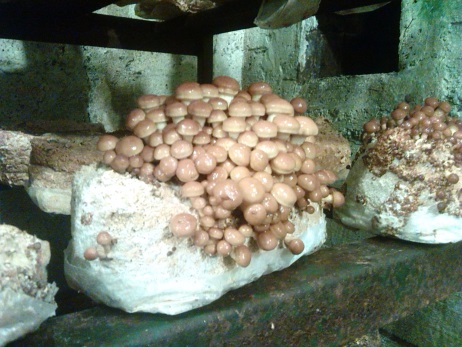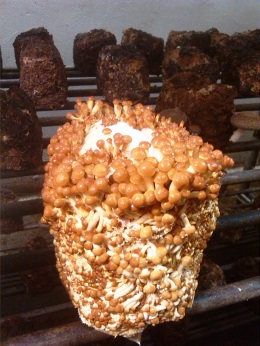Pholiota nameko



| ENG | Pholiota microspora/butterscotch mushroom |
| SK | šupinovka nameko |
| CZ | šupinovka nameko |
| PL | |
| HU |
Taxonomic characteristic
Realm: Fungi, Class: Agaricomycetes, Genus: Pholiota
Using
Pholiota nameko contains polysaccharide (PNP-1) which was isolated and purified by using enzymatic hydrolysis, by hot water extraction, ethanol precipitation, ion exchange and gel filtration chromatography. Anti-inflammatory activity PNP-1 was evaluated in rodents, wherein data showed that the PNP-1 has significant anti-inflammatory activity, indicating the antiseptic potential in the treatment of several inflammatory diseases (Li, et al. 2008).
Nevertheless, the healing properties of this fungus have been not yet conclusively confirmed, but nevertheless belong among important cultivated crop species, especially in Japan and China. It is popular and appreciated for fine taste and fine slime consistency which disappears during cooking (Jablonský, Šašek, 2006).
Botanical charakteristic
Nameko name comes from the Japanese, which translates as slimy. Size of hat depends on growing conditions, but generally ranges from 2-15 cm. Her surface is smooth and glossy with brown centre. In his youth, the fruiting bodies are covered with slime, later is the occurrence reduced. Overall colour of fruit bodies is light yellow, by maturing comes brown. Stem is 3-7 cm long, covered by a fibre and ring (Jablonský, Šašek, 2006).
Why to have the plant in your garden:
This type of fungus is grown on the trunks like Shiitake, but because the increased demands on moisture is cultivation in the garden relatively difficult but possible. Small fruiting bodies of mushrooms grow in nature on the stumps of certain deciduous tree species.
Text:
Ing. Dávid Chmelár, Ing. Marcel Golian, SUA, Nitra, Slovak Republic
Photo:
Ing. Dávid Chmelár, Ing. Marcel Golian, SUA, Nitra, Slovak Republic
English Translation:
Ing. Ján Farkaš, SUA, Nitra, Slovak Republic
Links to scientific articles
Jablonský, I., Šašek, V. 2006. Jedlé a léčivé houby. Brazda Praha. 263. ISBN 80-209-0341-0.
Li, H., Lu, X., Zhang, S., Lu, M., Liu, H. Anti-inflammatory activity of polysaccharide from Pholiota nameko. Biochemistry (Mosc). 2008 Jun;73(6):669-75.

